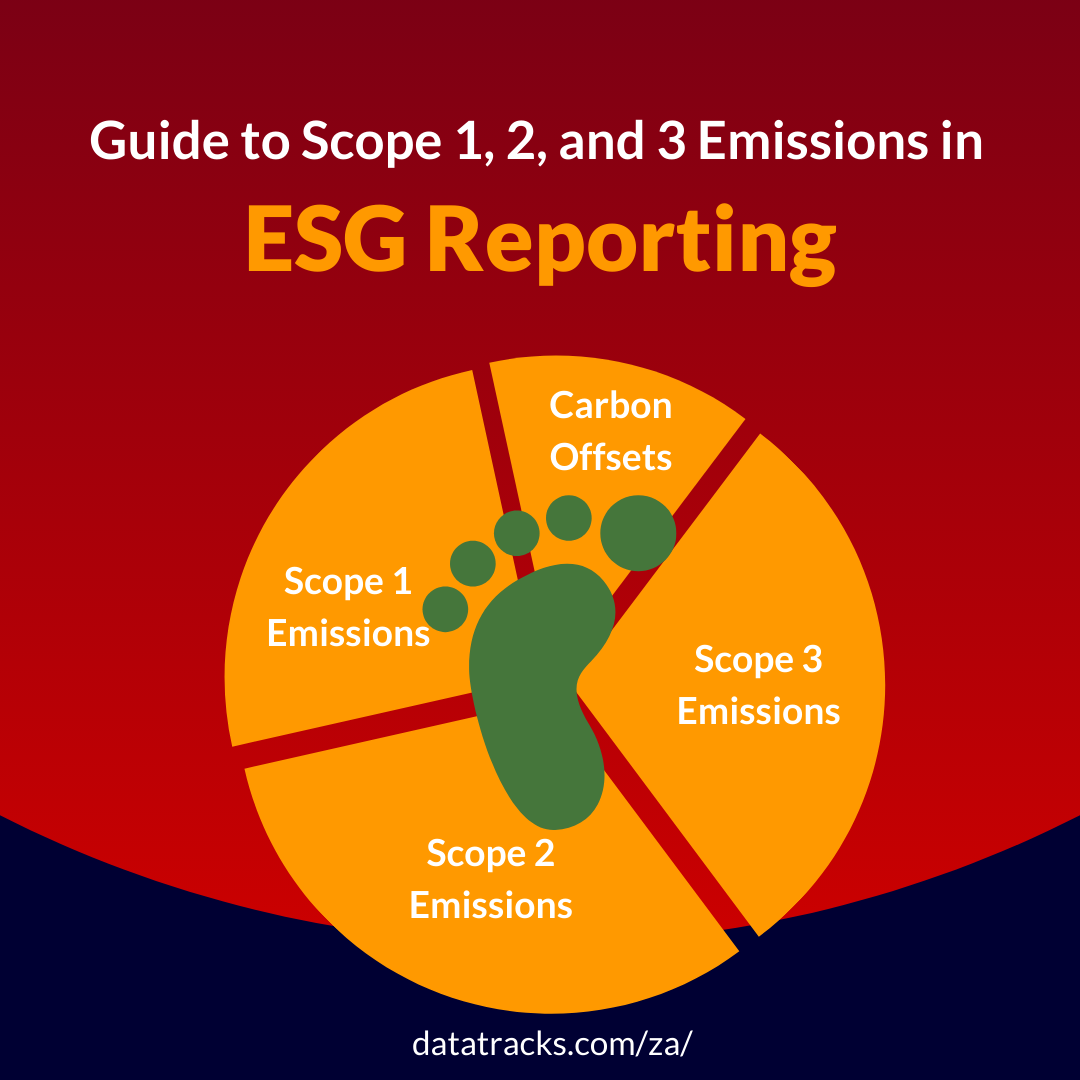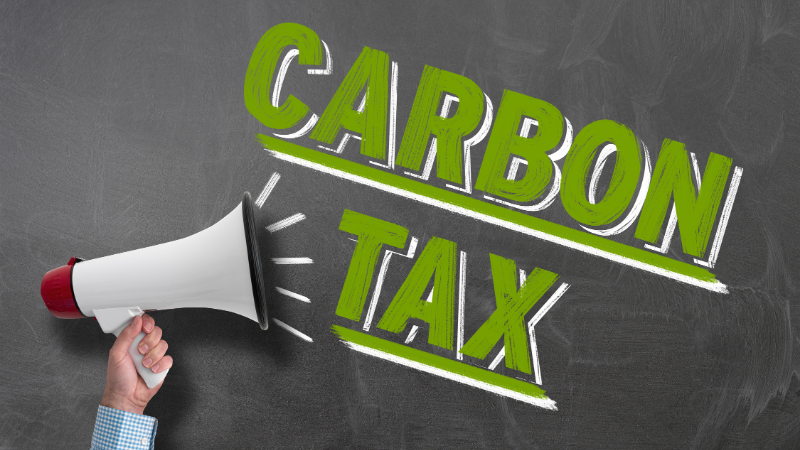Decoding Scope 1, Scope 2, and Scope 3 Emissions: A Guide to ESG Reporting
As you all know, South Africa is the largest greenhouse gas (GHG) emitter on the African continent. Climate change is a critical global challenge, and understanding greenhouse gas (GHG) emissions is key to mitigating its effects. In the context of corporate sustainability reporting, emissions are categorized into three scopes: Scope 1, Scope 2, and Scope 3. This blog delves into Scope 1 and Scope 2 emissions, with an emphasis on how these emissions are managed in South Africa. Additionally, we will touch on the reporting of Scope 3 emissions, carbon offsets, and comprehensive climate risk assessments.
‘E’ pillar of ESG – Measuring The carbon footprint of a company.
Scope 1 Emissions
Scope 1 emissions, also known as direct GHG emissions, occur from sources owned or controlled by a company. This includes emissions from combustion in owned or controlled boilers, furnaces, and vehicles and emissions from chemical production in owned or controlled process equipment.
Examples of Scope 1 emissions:
- Fuel combustion on-site (e.g., natural gas boilers)
- Company vehicles (e.g., delivery trucks)
- Fugitive emissions (e.g., leaks from refrigerants, venting)
In South Africa, companies are increasingly focusing on accurately measuring and reducing their Scope 1 emissions. This effort is driven by regulatory requirements and the growing emphasis on corporate responsibility towards climate change.
Scope 2 Emissions
Scope 2 emissions are indirect GHG emissions from the generation of purchased electricity, steam, heating, and cooling consumed by the reporting company. While these emissions occur at the facility where the energy is produced, they are attributed to the company purchasing the energy for consumption.
Examples of Scope 2 emissions:
- Electricity purchased for office buildings
- Steam used in industrial processes
- District heating or cooling
In South Africa, electricity generation is a significant source of GHG emissions due to the reliance on coal. Therefore, companies focusing on reducing Scope 2 emissions often look at energy efficiency measures and the purchase of renewable energy certificates (RECs).
Scope 3 Emissions
While not the primary focus of this blog, it is important to mention Scope 3 emissions, which are all indirect emissions not included in Scope 2 that occur in the value chain of the reporting company. This includes both upstream and downstream emissions.
Examples of Scope 3 emissions:
- Purchased goods and services
- Business travel
- Employee commuting
- Waste disposal
Carbon Offsets
Carbon offsets are reductions in GHG emissions made in order to compensate for emissions produced elsewhere. Companies invest in projects that reduce carbon in the atmosphere, such as reforestation projects or renewable energy installations.
Types of carbon offset projects:
- Renewable energy projects (wind, solar)
- Reforestation and afforestation
- Methane capture from landfills
In South Africa, carbon offset projects are gaining traction as companies seek to balance their emissions by investing in local and regional environmental projects.
Comprehensive Assessments of Climate Risks
Comprehensive climate risk assessments involve evaluating the potential financial impacts of climate-related risks and opportunities on a company. This includes both physical risks (like extreme weather events) and transition risks (like policy changes or shifts in market demand).
Components of climate risk assessments:
- Identifying physical and transition risks
- Assessing financial implications
- Developing mitigation and adaptation strategies
South Africa’s ESG Context
South Africa is particularly vulnerable to climate change’s impacts, including water scarcity, extreme weather events, and biodiversity loss. As a result, the country strongly emphasizes GHG emission reporting and reduction strategies.
Read more: South Africa’s Roadmap to ESG Reporting Preparedness
Key initiatives and regulations:
- The Carbon Tax Act, which imposes a tax on GHG emissions – which will see an increase in the carbon tax from R159 to R190 per tonne of CO2 equivalent starting 1 January 2024. This represents a 16% increase. Additionally, the government proposed a gradual reduction of the carbon tax’s basic tax-free allowance from 1 January 2026 to 31 December 2030.
- The National Greenhouse Gas Emission Reporting Regulations
- Voluntary corporate sustainability reporting frameworks, such as the Carbon Disclosure Project (CDP) and the Task Force on Climate-related Financial Disclosures (TCFD)
In the context of Environmental, Social, and Governance (ESG) reporting, GHG emissions include the measurement and reporting of emissions of seven gases: carbon dioxide (CO2), methane (CH4), nitrous oxide (N2O), hydrofluorocarbons (HFCs), perfluorocarbons (PFCs), sulphur hexafluoride (SF6), and nitrogen trifluoride (NF3).
South African companies are increasingly integrating Scope 1, Scope 2, and Scope 3 emissions reporting into their sustainability strategies. By doing so, they are not only complying with regulatory requirements but also contributing to global efforts to mitigate climate change.
Conclusion
Understanding and managing Scope 1 and Scope 2 emissions is crucial for companies aiming to reduce their carbon footprint and enhance their sustainability performance. In South Africa, the emphasis on accurate GHG emissions reporting, carbon offsets, and comprehensive climate risk assessments reflects the country’s commitment to addressing climate change. By focusing on these areas, South African companies can play a significant role in global sustainability efforts.
For more detailed information, consider exploring resources from regulatory bodies and sustainability organizations that provide guidelines and frameworks for emissions reporting and climate risk management.
Outsource your requirements to DataTracks for CIPC iXBRL preparation and ESG reporting in iXBRL format! Call +27-10-446-9061 or e-mail enquiry@datatracks.co.za to speak with an expert.
References:
- GHG Protocol
- South African Carbon Tax Act
- CDP
- Task Force on Climate-related Financial Disclosures (TCFD)
By understanding and addressing Scope 1 and Scope 2 emissions and by including Scope 3 emissions and carbon offsets in their climate strategies, companies can make significant strides toward a sustainable future.




